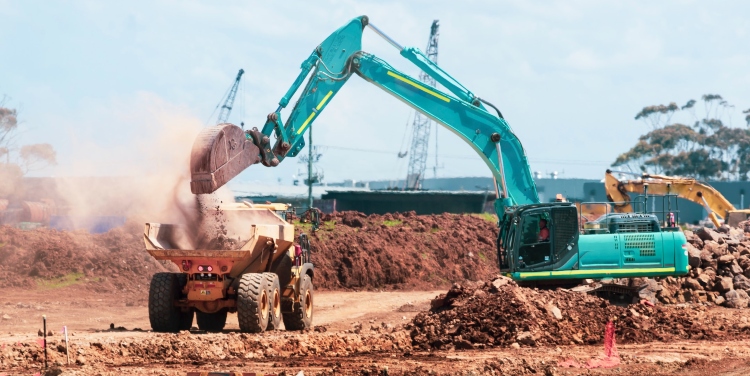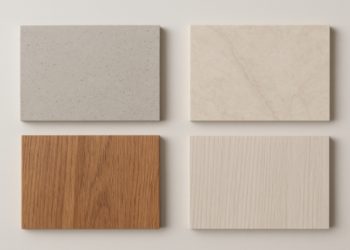Introduction
Knowing where to source the right building materials is essential for anyone diving into a construction project. Aggregates – from sand and gravel to crushed stone – play a pivotal role. Not only do they impact the durability and strength of the structure, but they also dictate the overall performance. If you’ve ever searched for “builders merchants near me” or “building supplies online,” this guide is for you. We’ll explore how to ensure your structure stands tall and proud.
Identify the Purpose of the Aggregate
Concrete Works: The UK’s climate demands a blend of strength and resistance. Aggregates for concrete should be resilient to weather extremes.
Landscaping: The aesthetic appeal is paramount, considering the UK’s scenic landscapes and heritage sites.
Road Construction: With the UK’s dense road network, durable aggregates are crucial to withstand frequent and varied traffic loads.
What are the different types of aggregates?
Whether you venture to a building materials supplier near me or explore building supplies online, understanding the different types of aggregates is essential. Aggregates are materials added to concrete to improve its strength and durability. They can be classified based on their size, shape and geological origin. Here are some common types of aggregates:
Coarse aggregates are larger than 4.75 mm and include gravel, crushed stone, and recycled concrete. They are used in the production of concrete for structural purposes.
Fine aggregates are smaller than 4.75 mm and include sand, crushed stone dust, and recycled concrete. They are used in concrete production for non-structural purposes such as plastering and flooring.
Lightweight aggregates are made from expanded clay, shale, or slate. They are used in the production of lightweight concrete for insulation purposes.
Heavyweight aggregates are made from magnetite, iron, or steel materials. They are used in the production of heavyweight concrete for radiation shielding purposes.
Natural aggregates are derived from naturally occurring rocks and minerals. They include materials such as sandstone, limestone, granite, and basalt.
Artificial aggregates are made from industrial by-products such as fly ash, blast furnace slag, or recycled concrete. They are used to reduce the environmental impact of concrete production by reusing waste materials.
Criteria for Selecting Quality Aggregates
The shape of aggregates is an important factor to consider. Angular and cubical-shaped aggregates are preferred over rounded or elongated aggregates. Angular and cubical-shaped aggregates provide better interlocking and better bonding with cement paste.
The size of aggregates is another important factor to consider. The aggregate size affects the workability, strength, and durability of concrete. The maximum size of the aggregate should be at most one-fourth of the minimum thickness of the member being cast.
Gradation of aggregates is the distribution of particle sizes in the aggregate. A well-graded aggregate has a good distribution of particle sizes, which results in better compaction and reduced voids in concrete. A poorly graded aggregate has a high percentage of fine particles, which results in poor compression and increased holes in concrete.
The density of aggregates is another important factor to consider. The density of the aggregate affects the weight and strength of concrete. Aggregates with higher density result in heavier and stronger concrete.
The durability of aggregates is also an important factor to consider. Aggregates should be durable enough to withstand weathering, abrasion, and other environmental factors. Durable aggregates result in long-lasting concrete.
Evaluating Shape and Texture
Shape: Aggregates can be angular or rounded. While rounded aggregates are easier to work with, angular aggregates often provide better interlocking.
Texture: A rough surface texture can enhance the bond strength in concrete, ensuring longevity.
Assess the Quality
Cleanliness: Aggregates should be devoid of contaminants or impurities that can compromise the strength and durability of the construction.
Strength: It’s crucial to assess the inherent strength of the aggregate, ensuring it can withstand the stresses of its intended use.
Moisture Content: This aspect affects workability and setting times, especially in concrete applications.
Environmental and Sustainability Considerations
Sustainable Procurement: With increasing emphasis on green construction, recycled and locally sourced aggregates are preferred.
Local Sourcing: This reduces transportation costs and lessens the environmental impact.
Budgetary Concerns and Cost-Effectiveness
Budgeting: While quality shouldn’t be compromised, it’s crucial to source aggregates that fit within the project’s financial scope.
Bulk Purchasing: Acquiring aggregates in large volumes can lead to cost savings.
Choosing the Right Supplier
Reputation: It’s advisable to source aggregates from well-established suppliers of consistent quality.
Certifications: Suppliers should adhere to industry standards and possess relevant certifications to ensure product quality.
Legal and Regulatory Aspects
Procurement Permits: Prior to aggregate extraction or usage, obtaining necessary permits and adhering to local regulations is essential.
Zoning Laws: Familiarity with local zoning regulations is key, as certain areas may have restrictions or specific requirements.
Importance of Expert Consultation
Expert Insights: Leverage the expertise of professionals in the field to ensure the selected aggrega tes are fit for purpose.
Continual Education: With evolving industry standards and best practices, staying informed is beneficial.
Conclusion
Choosing the right aggregates is crucial in achieving a successful construction project. By ensuring you select the best building materials sourced from reputable suppliers, you pave the way for a successful project. Whether visiting local building materials stores or ordering building supplies online, being informed and meticulous will serve you well.
David Prior
David Prior is the editor of Today News, responsible for the overall editorial strategy. He is an NCTJ-qualified journalist with over 20 years’ experience, and is also editor of the award-winning hyperlocal news title Altrincham Today. His LinkedIn profile is here.











































































